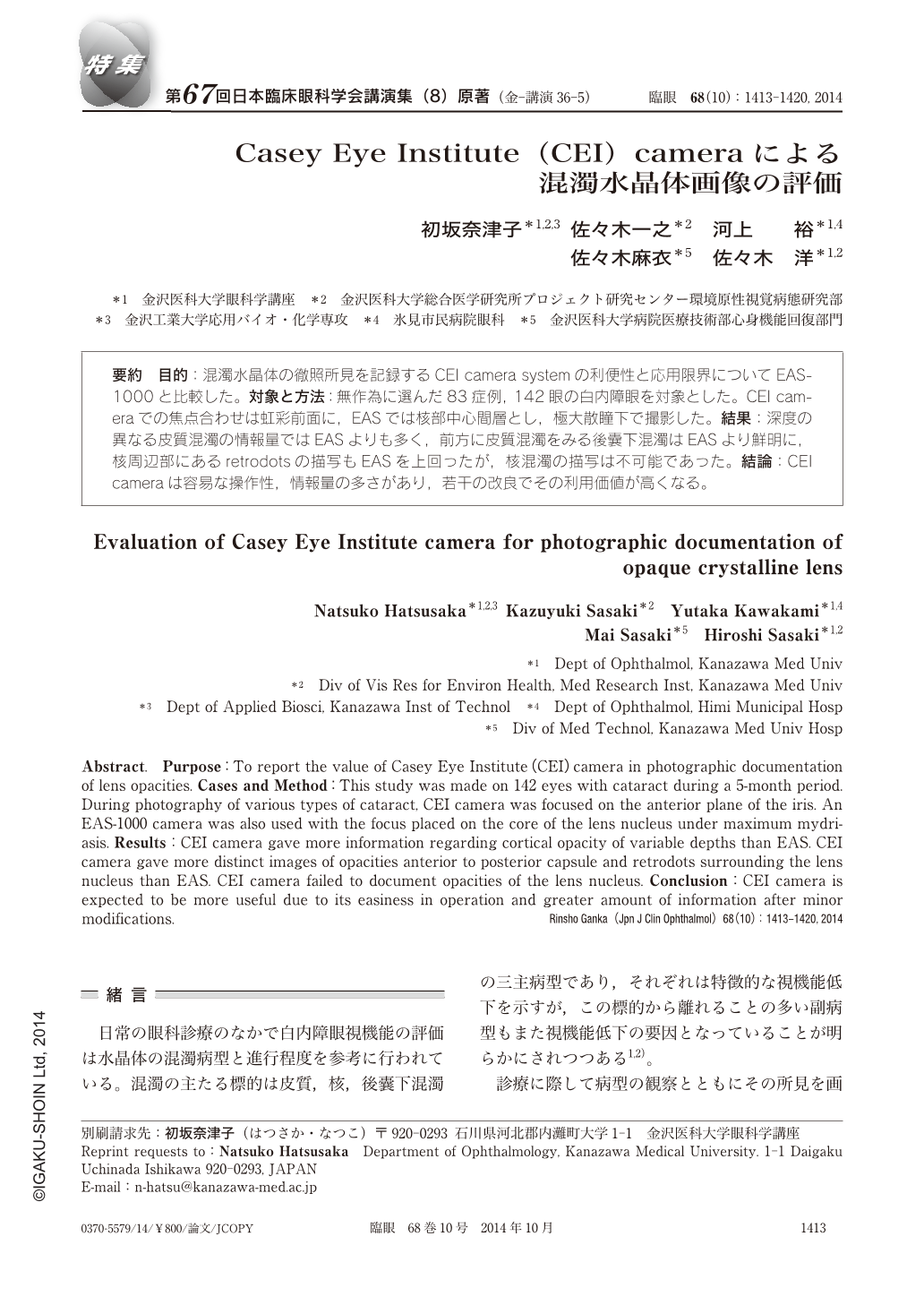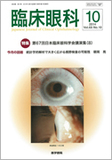Japanese
English
- 有料閲覧
- Abstract 文献概要
- 1ページ目 Look Inside
- 参考文献 Reference
要約 目的:混濁水晶体の徹照所見を記録するCEI camera systemの利便性と応用限界についてEAS-1000と比較した。対象と方法:無作為に選んだ83症例,142眼の白内障眼を対象とした。CEI cameraでの焦点合わせは虹彩前面に,EASでは核部中心間層とし,極大散瞳下で撮影した。結果:深度の異なる皮質混濁の情報量ではEASよりも多く,前方に皮質混濁をみる後囊下混濁はEASより鮮明に,核周辺部にあるretrodotsの描写もEASを上回ったが,核混濁の描写は不可能であった。結論:CEI cameraは容易な操作性,情報量の多さがあり,若干の改良でその利用価値が高くなる。
Abstract. Purpose:To report the value of Casey Eye Institute(CEI)camera in photographic documentation of lens opacities. Cases and Method:This study was made on 142 eyes with cataract during a 5-month period. During photography of various types of cataract, CEI camera was focused on the anterior plane of the iris. An EAS-1000 camera was also used with the focus placed on the core of the lens nucleus under maximum mydriasis. Results:CEI camera gave more information regarding cortical opacity of variable depths than EAS. CEI camera gave more distinct images of opacities anterior to posterior capsule and retrodots surrounding the lens nucleus than EAS. CEI camera failed to document opacities of the lens nucleus. Conclusion:CEI camera is expected to be more useful due to its easiness in operation and greater amount of information after minor modifications.

Copyright © 2014, Igaku-Shoin Ltd. All rights reserved.


